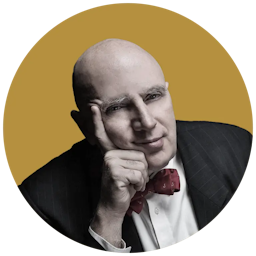This Band Won’t Just ‘Let It Be’
The Fab Faux performs an especially valuable service in that they play music that has never been heard in live performance.

The Fab Faux ended their annual concert at the Beacon Theater — timed, as usual, around John Lennon’s birthday — with three encores: “Please Please Me,” “I Wanna Hold Your Hand,” and “Got to Get You Into My Life.”
The main meat of the evening was the performance in full of the Beatles’ two final albums, “Let It Be” and “Abbey Road” — played in the order that they were recorded, which differs from that in which they were released. Thus, the Fab Faux very presciently juxtaposed some of the final music by the Beatles with two of the very first songs that made the world fall in love with the group to begin with.
For those who don’t know, the Fab Faux is a collective of five musicians best known otherwise for their work in television and other studios: bassist Will Lee and guitarist-keyboardist Jimmy Vivino, who were regulars on the David Letterman and Conan O’Brien television talk shows, respectively, along with two other guitarists, Frank Agnello and Jack Petruzzelli (who both also double on keyboards), and drummer Rich Pagano. Their mission statement is to play the music of history’s most lauded rock and roll band in live concert settings.
They capture all the actual notes, harmonies, and beats of the Beatles much the same way that the Jazz at Lincoln Center Orchestra does when playing Duke Ellington, or even how the other orchestras at Lincoln Center — the New York Philharmonic, to name one — do when playing Mozart or Beethoven.
The difference between the Fab Faux and other Beatles tribute projects is that they don’t wear wigs or costumes, or pretend to be the Beatles. This isn’t an act or a nostalgia trip; this is a band.
The Fab Faux performs an especially valuable service in that they play music that has never been heard in live performance. In fact, you could argue that from the moment the Beatles landed at New York in 1964, none of their live concerts was actually “heard” at all. The screams of the fans were so deafening that not only could no one in the audience hear what was happening on stage, but John Lennon, Paul McCartney, George Harrison, and Ringo Starr couldn’t even hear each other. No one could blame them for deciding never to tour again from 1966 onward.
Our understanding of the group’s penultimate album, “Let it Be,” the recording of which incorporates the informal rooftop concert of January 30, 1969, has been recently enhanced by Peter Jackson’s epic documentary, “The Beatles: Get Back,” and a new remix of the album itself. Hearing the Faux play the music live brings more revelations: “One After 909,” one of the earliest Lennon-McCartney songs, sounds even more like a 1960 rockabilly number, while “The Long and Winding Road” feels even more like a heartbreaking love song.
It’s particularly telling that Mr. McCartney’s “Get Back,” the last song on “Let It Be,” and Lennon’s “Come Together,” the first song on “Abbey Road,” come back to back in the Fab Faux concert — albeit separated by an intermission. They’re two of the bluesiest numbers the group created in this period, and they compliment each other, much like “Strawberry Fields” and “Penny Lane” do, as two distinct reminiscences of their Liverpool childhood — by John and Paul, respectively.
“Abbey Road” is a colossally beautiful endeavor: Harrison’s “Something,” which graduated to a different kind of greatness in diverse interpretations by Frank Sinatra, James Brown, and Elvis Presley, is a romantic ballad for the ages, while Ringo Starr’s “Octopus’s Garden” and Mr. McCartney’s “Maxwell Silver Hammer” are wonderfully whimsical — the latter with a decidedly sinister angle as well, rather like a Charles Addams cartoon.
Then there’s the 16-minute masterpiece on the Second Side, euphemistically referred to as “The Medley.” This is a misnomer; it sounds like no medley ever in the history of jazz or traditional pop. It might be better described as a suite, a song cycle, their answer to a musical theater overture, or simply a collage of eight songs.
Some of these were created and recorded explicitly for this purpose, some independently, and all were stitched together into this epic production, co-conceived by producer George Martin but composed by Lennon and Mr. McCartney.
It starts slowly with the four-minute “You Never Give Me Your Money,” a surprisingly tender melody contrasting with a highly mercenary lyric, and gradually builds. The climax, in which the piece crosscuts — in a parallel to D.W. Griffith’s “Intolerance” — between “Golden Slumbers,” “Carry That Weight,” and a (very Broadway-like) reprise of “You Never Give Me Your Money” — are among the most thrilling in all of popular music. The “Medley” is, in effect, this generation’s equivalent of the “Rhapsody in Blue” and Ravel’s “Bolero.” It also set a bar that other ambitious bands would try to match, i.e., Queen with “Bohemian Rhapsody.”
By then playing the 1962 “Please Please Me” as an encore, the Fab Faux neatly illustrated how far Lennon, Harrison, Mr. McCartney, and Mr. Starr had come in only seven years. The early hits are great dance music, but “Abbey Road” is something else entirely — amazing concert music by an ensemble that was no longer playing concerts. During the “Medley,” we sat at the edge of our seats as the piece reached its epic conclusion, but during “Please Please Me” and “I Wanna Hold Your Hand” we all got up and danced — literally out the doors of the Beacon and homeward for some golden slumbers of our own.
Correction: The writer of “Get Back” was Paul McCartney and the writer of “Come Together” was John Lennon. The writing credits were incorrect in an earlier version.

